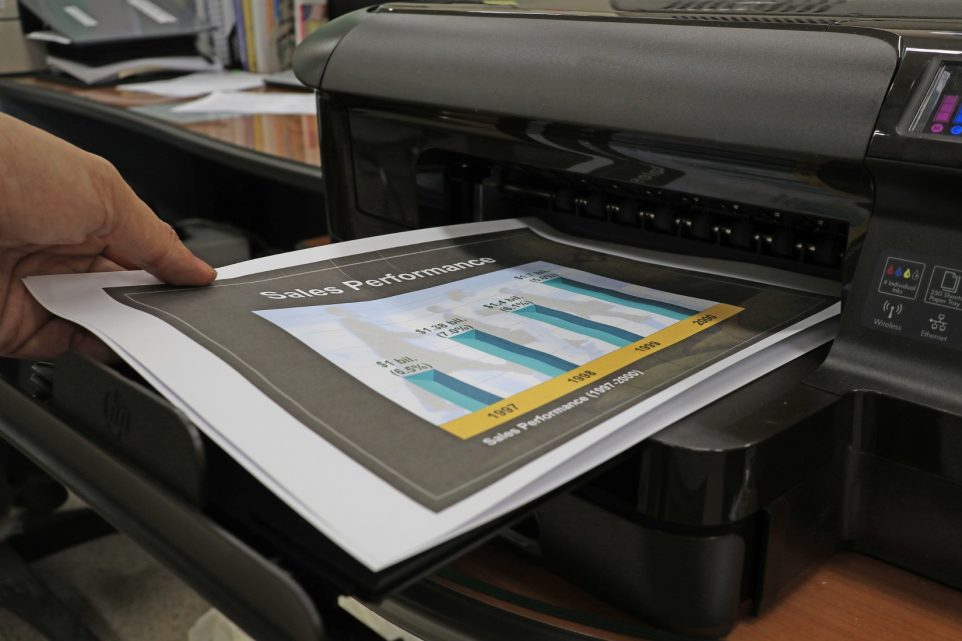What Does Collate Mean When Printing?

Printing can be a complicated process, but understanding the steps involved can help you make sure that you do it correctly. When setting up a document for printing, you may have noticed the option to “collate” your pages. But what does this option mean, and why is it important?
In this post, we’ll explain exactly what it means to collate pages when printing, and how to use this feature to print documents exactly as you intended. We’ll also discuss the types and advantages of collating and share some helpful practices and tips to ensure you collate your documents correctly. With everything you’ll learn here, you’ll be printing like a pro in no time.
What Is Collating?
Collating refers to the organization of pages or images before they are printed. It is commonly used when printing multiple copies of a document. It can also be used when printing multiple documents or images that need to be arranged in a specific order. Collating involves arranging pages in the correct order so they can be printed correctly and efficiently.
Different Types of Collating
There are two main types of collation: manual and automatic. Manual collating involves manually arranging each individual page into the desired order before printing. Automatic collation is done by using specialized printers and software that can automatically arrange documents into the desired order before printing.
Advantages of Collating
Collating offers several benefits to the user, such as saving time, improved efficiency, and better accuracy when printing multiple items at once. By arranging documents in the right order beforehand, users are able to reduce the amount of time spent manually organizing pages before printing. Additionally, collating ensures that all documents will be printed correctly and in the correct order, preventing printing errors or omissions due to misplacement or incorrect page ordering.
How to Collate When Printing
Knowing how to collate when printing depends on whether you’re using manual or automatic methods. For manual collation, all pages must be arranged in the desired order before they can be printed. For automatic collation, you need to make sure that your printer is equipped with special features that enable it to properly recognize and arrange documents in the right order before printing them out. Dot matrix printers are particularly useful for automatic collation since they have built-in software that can recognize and arrange documents as needed before printing.
Best Practices for Collating
When utilizing both manual and automatic collation methods, it is important to keep a few best practices in mind:
- Make sure documents are properly organized prior to printing
- Take extra care when organizing complex documents with multiple parts and sections
- Check all settings on your printer each time you begin a new print job
- Check each page after it has been printed to ensure accuracy
- Take advantage of automation features available on modern printers
Tips for Automating Collating
Automated collation is a great way for you to save time and effort when printing multiple documents. Here are some tips for automating the process:
- Utilize automated software tools such as Optical Character Recognition (OCR) to help sort and organize documents quickly
- Take advantage of batch processing capabilities on modern dot matrix printers
- Print multiple projects at once using automatic sheet feeders
- Utilize specialized software tools such as Barcode Recognition (BCR) to automatically sort and organize documents for more efficient printing
Printing professional documents can be a tricky task — and collating documents is an important part of the process. This printing method involves arranging pages in a specific order when printing, which can have a range of benefits. With these tips in mind, you can make it simpler and ensure your documents are arranged and printed properly for a high-quality end result.
Your Trust, Our Core Commitment
At Rising Tech, earning and maintaining your trust is the cornerstone of our mission. We're dedicated to transparency, impartiality, and the relentless pursuit of truth in every article, review, and recommendation we publish. Our commitment to these principles ensures that you, our valued reader, are always equipped with reliable and unbiased information. Let us be your trusted guide in the ever-evolving world of technology.